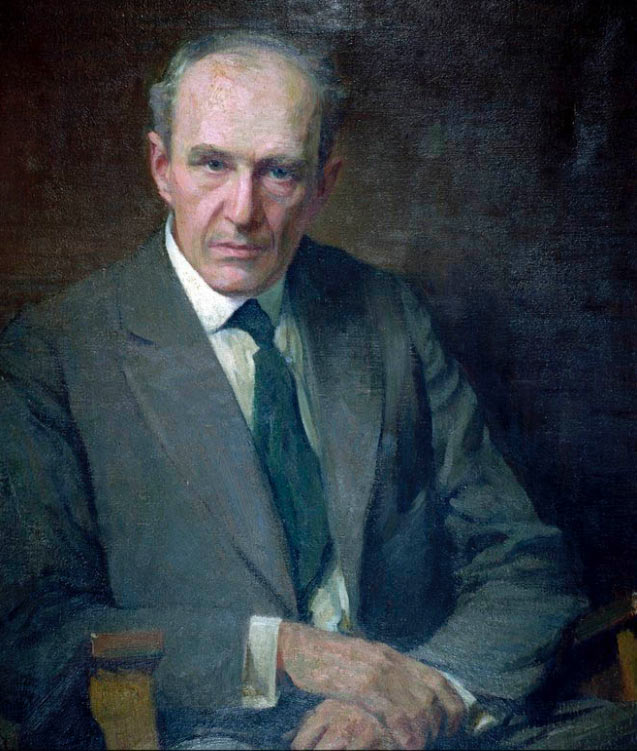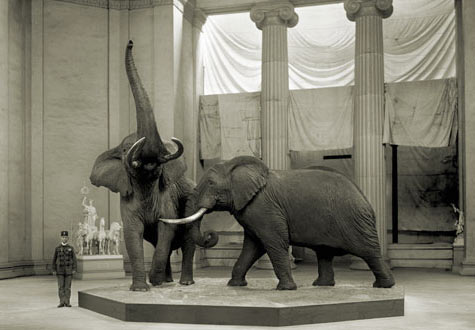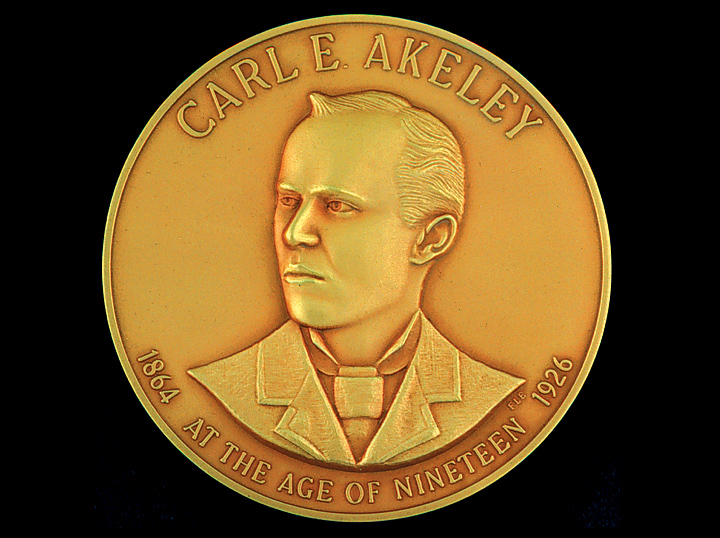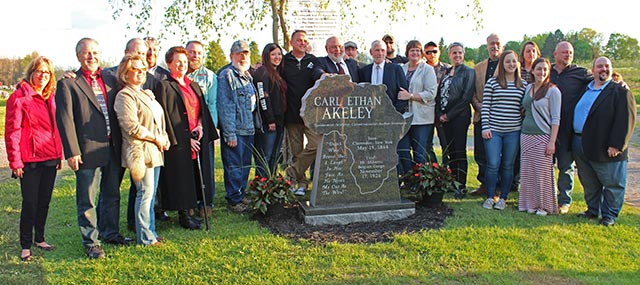
Date of Birth: May 19, 1864
Date of Death: November 17, 1926
Place of Birth: Clarendon, New York, USA
Burial place: Mt. Mikeno, Belgian Congo

Carl Ethan Akeley is known universally as the “Father of Modern Taxidermy”. He was an American naturalist and explorer who developed the new taxidermy procedures for mounting museum displays to show animals in their natural surroundings. His method of applying skin on a finely molded replica of the body of the animal gave results of unprecedented realism and elevated taxidermy from a craft to an art. His modeling led to sculpture, and he executed notable pieces showing elephants, lions, and lion spearers. Akeley’s goal was to create a panorama of Africa and its big game in American museums.
At age 19 he became an apprentice at Ward’s Natural Science Establishment in Rochester, N.Y., and during his associations with the Field Museum of Natural History in Chicago (1895–1909) and the American Museum of Natural History in New York City (1909–26) he made five trips to Africa to study, hunt, and collect big game. In 1923 his book In Brightest Africa appeared. He died during his last expedition and was buried on Mount Mikeno in Albert National Park (now Virunga National Park, Congo [Kinshasa]), the first wildlife sanctuary in central Africa, which he had helped establish. His inventions include the Akeley cement gun and the Akeley camera, a motion-picture camera adapted for use by naturalists, with which Akeley made the first motion pictures of gorillas in their natural habitat.
Akeley’s second wife, Mary Lee Jobe Akeley (1886–1966), was well known as an explorer and naturalist before her marriage (1924). Upon her husband’s death she remained in Africa in charge of the expedition. She was named his successor as adviser to the American Museum of Natural History, at which the Akeley African Hall was named in their honour.
He had previously been married to Delia J. Akeley (1875–1970) for nearly 20 years. Delia Akeley accompanied him on two of his biggest and most productive safaris to Africa in 1905 and again in 1909. Delia later returned to Africa twice under the auspices of the Brooklyn Museum of Arts and Sciences. She organized and led both trips and lived for several months in the Ituri Forest with Pygmies.

The World Taxidermy Championships® awards gold, silver and bronze medallions that bear Carl Akeley’s likeness—based on a photograph he had taken at Stein Photography in Milwaukee—to its “Best in World” winners. The reverse side of the medallion feature Jumbo the elephant, which was mounted by Akeley as a young man when P.T. Barnum’s prize attraction was tragically killed in a train accident. The medallions were sculpted by Floyd Easterman of the Milwaukee Public Museum. There is also a Carl Akeley Award for the most artistic mount at the World Show.
May 19, 2016, the 152nd birthday of Carl E. Akeley, with the help of Clarendon Historical Society President Melissa Ierlan and the generous donations of taxidermists on the Taxidermy.Net website, John Janelli’s vision of a permanent monument on North American soil was realized with the dedication and unveiling of the Akeley Memorial Stone.


Taxidermists from all over the country made the trip to upstate New York to be a part of this dedication ceremony. After a barbecue dinner and social hour hosted by the Clarendon Historical Society, the group reconvened at the Hillside Cemetery, listed on the National Register of Historic Places for the unveiling of the black African granite monument.

